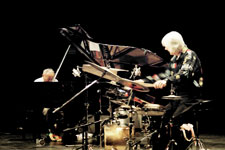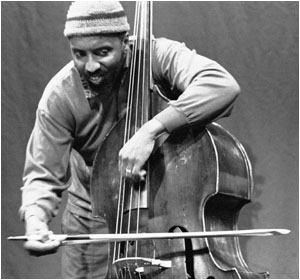
The setting – a bleak, snowy Utah in the 1840s.
The characters – a corrupt ‘justice of the peace’ who controls the town. A beautiful widow seeking revenge for her husband’s murder. A lone gunman whose speed on the draw is renowned throughout the state. And a group of bounty killers hunting down others for profit.
So far, so very standard spaghetti western. But this is no ordinary western, spaghetti or otherwise, and, while parts of it are stilted and the technical competence is sometimes lacking, it’s probably the bleakest and most thought-provoking film in the genre you’ll see for quite a while.
Certain elements immediately mark it out– the bleak, wintry setting (which was also employed in Andre de Toth’s excellent ‘Day of the Outlaw’ from 1959, starring Burl Ives and Robert Ryan), and the fact that the widow is a negress (played by newcomer Vonetta McGee, a striking actress who’d started out in experimental theatre and been involved in social activism, before going on to act in low-budget European movies, and then carve out a career of sorts in the 70s Hollywood Blaxpoitation boom). Tying in with this, there are a number of oblique references to racism (the villain, Tigrero/Loco, comments, “what times we live in - black’s worth as much as a white man”), something that perhaps raises connections with the so-called ‘political spaghettis’ being made by directors like Damiano Damiani (‘A Bullet for a General’). The fact that the hero, the lone gunman, is a mute who speaks not a word and makes no sound for the entire film, takes the spaghetti western tendency to work through expressive, stylised facial expressions to an extreme level (though the actor, Jean-Louis Trintignant, makes it seem very unforced, and allows us to actually care about the character, conveying a mournful vulnerability as well as hard-nosed brutality – hard to see Clint Eastwood pulling off the same trick.)

The ending sees bounty killers shoot down the crippled hero before massacring a saloon full of men, women, and children, and riding off with the assertion that it’s all been done according to the law (the people they’ve killed are all outlaws – wrongfully so, but still outlaws). It’s exceptionally bleak, as if to say, this was the old west, this is what your nation was built on, this is what passed for justice – in other words, taking a similarly dark outlook to ‘The Ox-Bow Incident’ (one of the rare American westerns to take a less than rosy look at the nineteenth century American west – rare, that is, before the spate of heavy-handed 1970s films which drew parallels between the treatment of the native American Indians and the war in Vietnam – ‘Little Big Man’, ‘Soldier Blue’).
But it’s not just the Americans’ view of their own history which it’s subverting – after all, dig a bit deeper, and you’ll find serious problems being raised earlier on – by Ford in ‘The Searchers’, for instance – in other words, it’s not as if all American westerns took a rose-tinted view of their own history. Ford had even made ‘Cheyenne Autumn’ in 1964, four years before Corbucci’s film, where he portrayed the sufferings of the native inhabitants (and, earlier than that, 1950’s ‘Broken Arrow’ marked an important, if somewhat romanticised, sympathetic portrayal of Indians as far more than murdering savages). No, ‘The Great Silence’ is as much a response to other Italian westerns as it is to American ones. Leone’s Man With No Name trilogy showed the west as a brutal, desolate place, where women were virtually absent and killing and money were many people’s sole motives. The villains in his films were clearly villains, characterised by their hysterical, cackling laughter, their drug-induced reveries, their sadism, and the fact that they were accompanied by a dozen or so accomplices. Yet the heroes only seemed to be heroes, perhaps, because the baroque extravagances of the villains were so repulsive. At the beginning of ‘For a Few Dollars More’, a man riding a horse, seen in the distance, is killed by a long-range rifle shot – we don’t know who he is, whether he’s a good or a bad man – he’s little more than a dot on the horizon – but the fact is, he’s just been murdered. Then we read the screen-card: “where life had no value, death, sometimes, had its price. That is why the bounty killers appeared.” It turns out that these bounty killers are the ‘heroes’ of the film, and presumably one of them has just committed the act we have just witnessed. Bounty hunters had figured in American westerns before (‘The Bounty Hunter’, a fairly innocuous effort starring Randolph Scott, came out in 1954), but the fact remains that these are professionals who kill people for money – unlike sheriffs, who act out of a civic duty, a responsibility to the community that arises out of their position as representatives of justice in action – they’re not really very nice people. Leone softens the impact of this in several ways: (1) by showing how corrupt and inept the lawmen, who should be dealing with these criminals, are (Monco: Tell me, isn't sheriff supposed to be courageous, loyal and, above all, honest? Sherrif of White Rocks: Yeah, that he is. [Monco takes badge off of the sheriff's vest, and gives it to some town folks] Monco: Think you people need a new sheriff). (2) By giving his killers motives (Lee Van Cleef’s Colonel Mortimer in ‘For a Few Dollars More’ wants revenge for the rape and murder of his sister). Or (3) by making a joke out of it, as in the closing exchange of the same film:
Monco (Clint Eastwood): [counting reward sums of outlaws he just killed] Ten thousand... twelve thousand... fifteen... sixteen... seventeen... twenty-two. Twenty-two?
[An outlaw comes from behind, Monco turns and shoots him dead]
Monco: ...Twenty-seven.
Col. Douglas Mortimer: Any trouble, boy?
Monco: No, old man. Thought I was having trouble with my adding. It's all right now.

In ‘The Great Silence’, however, director Sergio Corbucci takes the idea that bounty killers must, by the nature of the job they have chosen to do, have some moral deficiencies, and runs with it – Klaus Kinki (a spaghetti western stalwart, always liable to turn in a scene-stealing psychotic performance, who, incidentally, features in ‘For a Few Dollars More’ as one of the ‘heavies’ in El Indio’s gang), murders and glares his way through the film, his intense blue eyes giving him a look of utter menace. Along with his cronies, he takes the place of the bandits who were the villains in Leone’s films – indeed, here, the starving bandits we meet, hiding up in the hills, are unjustly outlawed men waiting for an amnesty from the governor, and living in terror of the bounty killers who want to kill them for the reward before they are pardoned. In a way, they are similar to Leone’s characters – calculating, quick-draw gunmen who take advantage of the brutal climate they find themselves in for monetary gain – but they are so coldly inhuman that Eastwood and co. seem lovable in comparison. While the hero, Silence, who works against the bounty hunters, is also, partly, in it for money, asking $1000 dollars of Vonnetta McGee’s widow in order to kill Loco, he sticks to certain codes of conduct, such as protecting the innocent, and only shooting in self-defence (he forces his opponent to draw first).

Pehaps the most important thing about this film is that it moves far beyond the moral murkiness of Leone’s trilogy towards a serious examination of the moral implications of such a brutal society as that of the old west. Leone gleefully blasts away all the old myths, but his stylised vision is maybe less ‘realistic’ than one might think – less well-rounded than Corbucci’s ‘Silence’, touching on less complex issues, though, as film-making, it’s perhaps more competent (and more entertaining). The title card at the end of the film, proclaiming the historical basis of the story (something I’m unable to substantiate), adds a note of gravitas lacking from the Dollars trilogy, and the hopeless sacrificial death of Silence actually plays out a cliché familiar from ‘Shane’ - ‘a man’s-gotta-do-what-a-man’s-gotta-do’ – rather than the more superficial, monetary motivations of Clint Eastwood’s character. As Howard Hughes (not the tycoon!) puts it in the Pocket Essentials Spaghetti Western guide, “the nihilistic finale lives long in the memory – a moment when a man has to do what a man has to do, over love, the odds, and reasonable logic.” A damn sight more thought-provoking and moving than counting up the money you’ve earned by blasting away a dozen heavies and driving off happily into the sunset.
This is not an entirely successful film– Corbucci’s response to Leone indulges in many of the same clichés that the other director had established with his trilogy: the stylised shootouts, confrontations, silences, and so on. Its interest lies more in the ideas it presents than the way it presents them – though it is certainly a cut above many other spaghettis, and the snowy landscapes, coupled with Ennio Morricone’s wonderful score and some good performances, ensure that it’s very watchable.

While it may not be the greatest movie, we need more films like this – films that take us out of our comfort zone, that give us enough generic points of reference to lull us into some sense of security, but in the end will not allow us the easy resolution we expect, and make us question the very basis of the generic values and elements that made us want to see the film in the first place.











